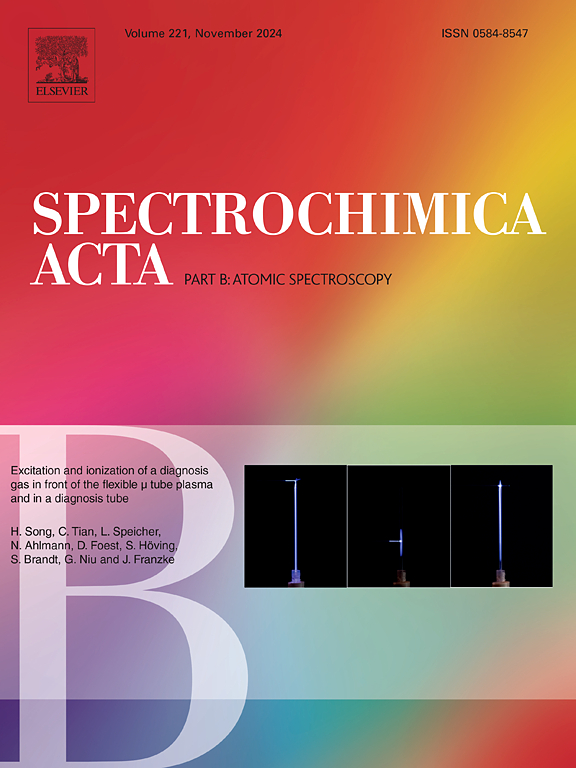Mechanisms of signal uncertainty generation in laser-induced breakdown spectroscopy within different flame regions
IF 3.2
2区 化学
Q1 SPECTROSCOPY
引用次数: 0
Abstract
The inhomogeneous matrix of flame has distinct effects on signal uncertainty of laser-induced breakdown spectroscopy (LIBS) which hindered quantitative equivalence ratio measurement across the entire combustion field. The spectral signal uncertainty in different flame regions, including low-temperature premixed reactants and high-temperature products, were analyzed respectively. Using time-resolved spectra and fast photography techniques, the generation mechanism of spectral signal uncertainty was elucidated. The generation and evolution processes of plasma were affected by incident laser energy and properties of target gas medium. Under atmospheric conditions, excessive laser energies (≥ 100 mJ) in low-temperature premixed gases led to a rise in signal RSD due to the great disturbance caused by intense plasma rebounding process and consequent chemical reactions. In high-temperature reacting regions, only a small portion of laser energy could be deposited in plasma when the incident laser energy was low (< 60 mJ). Due to the distinct process of breakdown and laser-plasma interaction in reacting regions, a two-lobe structure plasma was discovered. The interaction between these lobes disrupted the plasma evolution process and caused high fluctuation in plasma morphology. Clear understanding of the generation mechanism of signal uncertainty is favor to optimize experimental parameters and improve LIBS quantitative performance in combustion diagnostics.

求助全文
约1分钟内获得全文
求助全文
来源期刊
CiteScore
6.10
自引率
12.10%
发文量
173
审稿时长
81 days
期刊介绍:
Spectrochimica Acta Part B: Atomic Spectroscopy, is intended for the rapid publication of both original work and reviews in the following fields:
Atomic Emission (AES), Atomic Absorption (AAS) and Atomic Fluorescence (AFS) spectroscopy;
Mass Spectrometry (MS) for inorganic analysis covering Spark Source (SS-MS), Inductively Coupled Plasma (ICP-MS), Glow Discharge (GD-MS), and Secondary Ion Mass Spectrometry (SIMS).
Laser induced atomic spectroscopy for inorganic analysis, including non-linear optical laser spectroscopy, covering Laser Enhanced Ionization (LEI), Laser Induced Fluorescence (LIF), Resonance Ionization Spectroscopy (RIS) and Resonance Ionization Mass Spectrometry (RIMS); Laser Induced Breakdown Spectroscopy (LIBS); Cavity Ringdown Spectroscopy (CRDS), Laser Ablation Inductively Coupled Plasma Atomic Emission Spectroscopy (LA-ICP-AES) and Laser Ablation Inductively Coupled Plasma Mass Spectrometry (LA-ICP-MS).
X-ray spectrometry, X-ray Optics and Microanalysis, including X-ray fluorescence spectrometry (XRF) and related techniques, in particular Total-reflection X-ray Fluorescence Spectrometry (TXRF), and Synchrotron Radiation-excited Total reflection XRF (SR-TXRF).
Manuscripts dealing with (i) fundamentals, (ii) methodology development, (iii)instrumentation, and (iv) applications, can be submitted for publication.

 求助内容:
求助内容: 应助结果提醒方式:
应助结果提醒方式:


